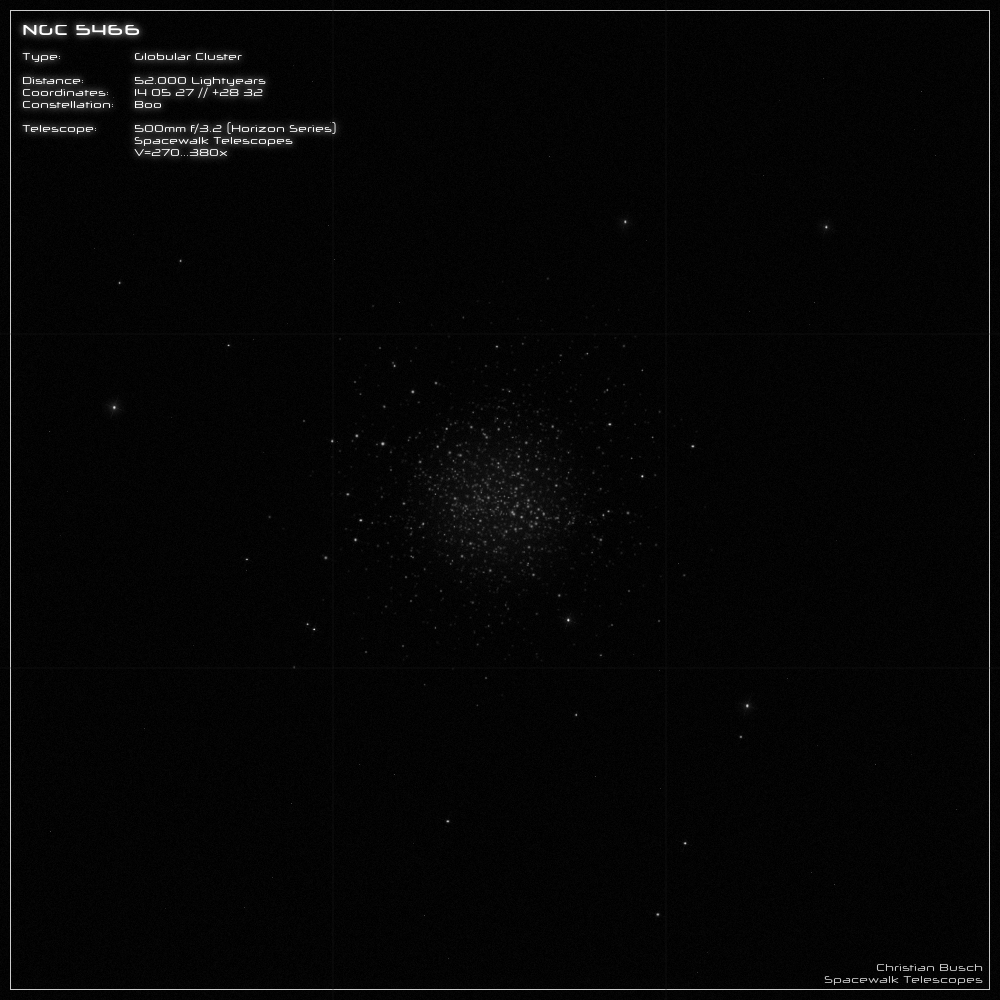NGC 5466, Globular Cluster
The globular cluster NGC 5466 is located at a distance of 52,000 light-years in the constellation Bootes and is best observed in spring. It has
an apparent brightness of 9.8mag and a magnitude of 10'. The object was discovered in May 1784 by F.W. Herschel.
The cluster belongs to concentration class XII, which means that the star density hardly increases towards the center and the individual stars
are only loosely bound. Globular clusters of this type have a high risk of losing many stars when passing through the plane of the Milky Way
and thus disintegrating over time. In the case of NGC 5466, dissolution has not yet occurred because its orbit prevents it from coming too close
to our home galaxy. Nevertheless, tidal tails with an extension of 45° have been detected - so the cluster has even lost a large number of stars.
The mass of NGC 5466 is estimated to be between 60,000 and 100,000 solar masses.
----------------------------------------------------------------------------------------------------------------------------------------------
In my 20" f/3 telescope, NGC 5466 offers a wonderful sight on a moonless, dark night.
At 270x, the cluster is completely resolved both in the outer regions and in the core. The center is slightly brighter, the background appears grainy.
In addition, some star chains wind their way outwards.

